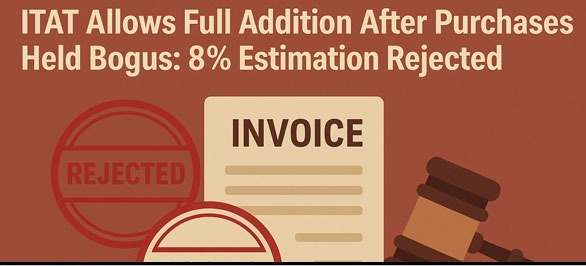1. This appeal arises out of Suit. No. 131 brought by the Plaintiffs for a declaration that the lands in dispute form part of their nim howla Asaruddi within howla Haris Chandra, situate in the patni of the Defendants Nos. 8 and 9, and for recovery of possession of the said land. The Plaintiffs alleged that they let out the lands for one year to a sub-tenant in 1321, but the Defendants having obstructed them in taking possession he surrendered the lands to the Plaintiffs. The main defence was that the lands were not included in the Plaintiffs'' nim howla but were the khas lands of the patnidar, that the suit was barred by the provisions of sec. 109 of the Bengal Tenancy Act, and was also barred by limitation. The Courts below have concurred in decreeing the suit. The, first contention raised on behalf of the Appellant is that the suit is barred by the provisions of sec. 109 of the Bengal Tenancy Act. It appears that the Plaintiffs brought a suit under sec. 106 of the Bengal Tenancy Act, but withdrew from the suit with liberty to bring a fresh suit. It is urged that sec. 109 bars a suit even if the previous suit was withdrawn, and reliance is placed upon the case of Srimati Abeda Khatun v. Majib Ali 24 C.W.N 1020 (1920). Sec. 109 of the Bengal Tenancy Act lays down that subject to the provisions of sec. 109A, a Civil Court shall not entertain any application or suit concerning any matter which is or has already been the subject of an application made, suit instituted or proceedings taken under secs. 105 to 108 both inclusive. But where a suit is withdrawn with liberty to bring a fresh suit we think it must be regarded as having been non-existent. A similar view was taken in Cheoddetti v. Tulsi Singh ILR 40 Cal. 428 : S.C. 17 C.W.N. 467 (1912), where an application under sec. 105 was withdrawn without liberty to bring a fresh suit. The learned Judges (Chitty and Teunon, JJ.) held that an application under sec. 105 cannot be regarded as a suit and that therefore, although an application was withdrawn without liberty to bring a fresh application, a suit for enhancement of rent is not barred by the provisions of sec. 109. In Srimati Kamini Sundari v. Abdul Habin 28 C.L.J. 254 (1918), Teunon and Richardson, JJ., following the above case held that an application (under sec. 105) made, but withdrawn, is to be treated as one never made. In the case of Srimati Abeda Khatun v. Majib Ali 24 C.W.N 1020 (1920), however, there is an observation of Mookerjee, C.J., and Fletcher, J., that an application which has been made, whether it is withdrawn or whether it is dismissed for non-prosecution, is nevertheless an application made within the meaning of sec. 109. But in that case the application under sec. 105 was dismissed for non-prosecution. Where an application or a suit has been dismissed whether upon the merits or for non-prosecution, it comes within the words "has been the subject-matter" of the application or the suit, and the applicant cannot avoid the consequences merely by not prosecuting the application or suit. Where, however, as in the present case, a Plaintiff in a suit under sec. 106 has been permitted to withdraw from the suit with liberty to bring a fresh suit, we think it should be treated as one not having been brought. The application under sec. 105, in the case of Cheoddetti v. Tulsi Singh ILR 40 Cal. 428 : S.C. 17 C.W.N. 467 (1912) and Srimati Kamini Sundari v. Abdul Habiu 28 C.L.J. 254 (1918), was withdrawn without liberty to make a fresh application and the observations of, the learned Judges in the case of Srimati Abeda Khatun v. Majib Ali 24 C.W.N 1020 (1920) as to the effect of withdrawal of an application, must be taken to apply to a case where the application is withdrawn without liberty to make a fresh application.
2. It is contended that the Revenue Officer had no power to give liberty to bring a fresh suit in the Civil Court. But it is unnecessary to decide that question, because assuming that he had no power to do so, he could allow the suit to be withdrawn with liberty to bring a fresh suit in his own Court, and the effect of such an order must be taken to be (as we have said above) as if the suit had never been brought. We are accordingly of opinion that the suit is not barred by the provisions of sec. 109 of the Bengal Tenancy Act.
3. No question of limitation arises in this case as the suit is for recovery of possession on declaration of title, and the suit is brought within 12 years of the dispossession.
4. The next contention is that the Court below in arriving at the conclusion that Plaintiffs have proved their title and possession, has relied upon certain documents (Exs. 3 to 6) which are inadmissible in evidence. These documents were executed between strangers to the suit, and the landlords in dispute were referred to in the boundaries of lands dealt with in those documents.
5. It is contended on behalf of the Respondent that the documents objected to were used in Suit No. 1882 out of which Appeal No. 1341 arises and not in this case the documents which have been used in this case being Exs. 15, F and 21 to which no exception can be taken. It appears, however, that the evidence relating to both the suits were considered together, and the Court below in more that one place refers to the recital of nim howla. Asaruddi and howla Haris Chandra in the boundaries of the documents, Exs. 3 to 6. That being so, it is difficult to say that they were not used in evidence in deciding this case.
6. In the case of Dwarkanath v. Mukunda Lal 5 C.L.J. 55 (1906) it was held that documents, though not inter partes containing recitals that a particular land belongs to a particular tenure which is in question, are admissible in evidence under either sec. 11 (b) or sec. 13 of the Evidence Act although they are not conclusive or binding evidence and may be very weak evidence or even of no weight at all. A contrary view was, however, taken in Abdul Ali v. Syed Rejan 19 C.W.N. 468 (1913). The question whether recitals in boundaries of other lands in documents between third parties (such as there are in the present case) are admissible in evidence under sec. 11 or sec. 13 of the Evidence Act was considered in the case of Abdullah v. Kunj Behary Lall 16 C.W.N. 252 : S.C. 14 C.L.J. 467 (1911) and was answered in the negative. The question is not free from doubt, but, having regard to the recent decisions on the point, we hold that Exs. 3 to 6 are not admissible in evidence.
7. There is no doubt considerable other evidence, both oral and documentary, in support of the finding of the Court below, but in second appeal we cannot uphold the finding upon the other evidence after excluding the evidence which is inadmissible. We are accordingly constrained to send the case back to the Lower Appellate Court for a finding upon the other evidence upon the record.
8. Second Appeal No. 1341 arises out of Suit No. 1882. In this case no question arises whether the suit is barred by sec. 109, Bengal Act, as there was no previous suit under sec 106. But the question of limitation has been urged in this case.
9. It appears that the record-of-rights was published in February 1907 and the suit was instituted on the 15th December 1914, i.e., more than six years after the publication of the record-of-rights. But the Plaintiffs do not pray for correction of any entry in the record-of-rights. It is contended that a suit for declaration of title is governed by Art. 120 of the Limitation Act and the cases of Mahabharat Saha v. Abdul Hamid Khan 1 C.L.J. 73 (1904) and Shyamanand v. Rajnarain 4 C.L.J. 568 (1906) are relied upon. There is also a prayer for confirmation of possession. It is unnecessary to consider whether a suit for confirmation of possession is governed by Art. 120, because assuming that Art. 120 applies, the Plaintiffs stated that their cause of action arose when the Defendants attempted to disturb the possession of the Plaintiffs. The attempt at dispossession was made in 1914 (i.e., within six years of the suit) and the Plaintiff''s case on the point has evidently been accepted by the Courts below. It is true that the entry in the record-of-rights was made more than six years before the suit but the entry merely raised a presumption of correctness against the Plaintiffs and they had to prove by evidence that it was incorrect. We are accordingly of opinion that the suit is not barred by limitation. The question of admissibility of Exs. 3 to 6 in evidence arises in this case. We have already dealt with the question in Appeal No. 1380, and one decision, an the point will govern this case also. The learned Pleader for the Respondent pointed out that two of the documents, viz., Exs. 3 and 4, were not executed by third parties, the executant being a co-owner of the nim howla under which the Plaintiffs claim the raiyati jote and was therefore interested in the land. The Court below will consider the point in this case, as also in Suit No. 134, if it applies to that suit.
10. Objection is also taken to the admissibility of Exs. 1 and 2. It is found, however, that the original records are destroyed, and the copies were admitted as secondary evidence. We do not think, therefore that there is anything in that objection.
11. The last contention is that there is no specific finding whether the land in dispute is included in the raiyati jote claimed by the Plaintiff.
12. The Court of appeal below has come to the finding that the lands in suit "were within the howlas as stated above," and in an earlier part of the judgment it refers to "the howlas, nim howlas and raiyati as set up by the Plaintiffs." It seems, therefore, that by the words "within the howlas as stated above," the Court below meant to find that the land were included within the raiyati jote set up by the Plaintiff''s, but it might have been made clearer, because the raiyati jote and the howla are not co-extensive, and as the case is going back, the Court below will come to a clear finding upon the point whether the lands are included within the raiyati set up by the Plaintiffs. So far as the other case is concerned (No. 1380), we think the finding that the lands are included in the howla is sufficient, because no raiyati jute was claimed, in that case.
13. The result is that both the cases must go back to the Appellate Court for a fresh decision upon the evidence on the record other than the documents which are in admissible in evidence, having regards to the observation made above. Costs to abide the result.

